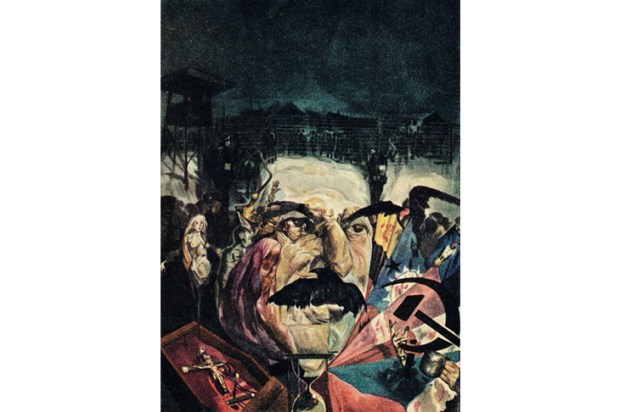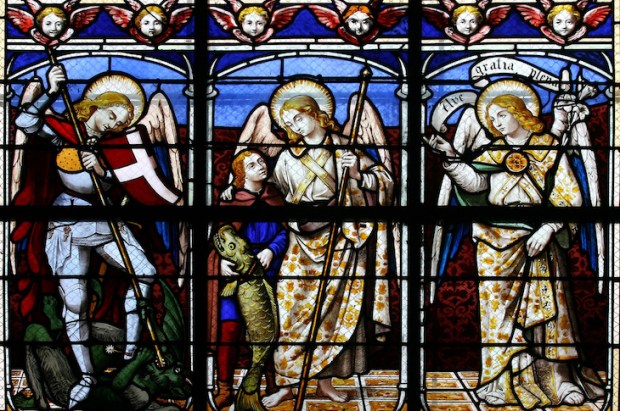I spent part of the summer sailing around Ithaca and the Ionian Sea. It was a good reminder of how capricious Homeric weather can be. In the space of a few days the wind shifted dramatically to three different points of the compass — and none of them was the gentle westerly Zephyr that brought Odysseus and his men back to almost spitting distance of their homeland. Almost, because just as they approached, the crew became suspicious of the goatskin bag in which Aeolus had helpfully packed away the other hostile winds and let them all loose.
Nick Hunt tries to track down a few of Europe’s more errant and potent winds. He starts with the homegrown Helm, which blusters across the Pennines. In its day this has been known to blow a countryman off his horse and demolish what had been the only remaining tower of Haresceugh Castle.
He is honest enough to admit that at first he can’t find the Helm, which does not make for the most dynamic of openings — even if the wind turns out later to be a postponed pleasure. Like those in search of surfing waves or fish, when looking for winds you will almost always arrive somewhere to be told you should have been there yesterday.
Only halfway through the book do we finally meet one of his quarry, the enfant terrible of the Adriatic, the Bora. The name comes from Borea, the ice-bearded God of winter. The wind is a dry, frigid one that forms when cold air builds up behind the mountains until the pressure is so high that it is dragged through them, with enormous violence. It covers everything in its path with crystalline ice formations.
One of the mouths from which the Bora emerges is directly above Trieste, and the city has chains slung along its pavements for the inhabitants to cling to when it starts to howl. Hunt heads up to the Karst plateau to confront the monstrous gale: dead oak trees quiver as their branches rattle like maracas and — a quite wonderfully onomatopoeic word — the ‘psithurism’ of leaves being stripped is intense. Most of Hunt’s winds measure high up on the Beaufort scale and he reminds us engagingly that the unit of knots for measuring wind speed comes from trailing a knotted rope behind a ship and counting how many knots passed through a sailor’s fingers as the line played out.
But he also describes the Foehn, which crosses the Alps and is as warm ‘as a car exhaust, creating a vacuum effect, so that one is forced to take amphibian gulps of air’. Hermann Hesse wrote of ‘the gentle Foehn fever that overcomes the mountain dwellers, especially their womenfolk, robbing them of their sleep and bewitching their sleep’.
Hunt’s quest is bold but not always successful and the book occasionally languishes in the doldrums as he searches for the elusive winds. There is rather too much detail on his accommodation and how he travelled to where he wanted to start a journey; at times I would have liked to have left the book out on a blustery hillside so it could be stripped of such accretions.
However, he can also be lyrical and scholarly in the tradition of his hero Patrick Leigh Fermor, as when he tells us how the Greek word for wind, anemos, is the root of the Latin anima, ‘soul’, the force that animates.
The great storm of 1987 caused, according to Tamsin Treverton Jones’s Wind Blown, ‘a transformation to the British landscape not seen since the Blitz’. Fifteen million trees came down. The last time a storm that big hit the British Isles was in 1703 when an extra-tropical cyclone arrived, killing more than 8,000 people on land and sea. Daniel Defoe, no less, documented how that one flattened and destroyed everything in its path.
In 1987, Toys Hill in Kent and the neighbouring estate of Chartwell were among the worst hit. National Trust employees said in some places they could walk on fallen trees for three or four miles without touching the ground.
Wind Blown is as much memoir as history, and attractively weaves in memories of the author’s artist father, Terry Thomas, whose mural commemorating the storm stands in Kew Gardens. She has a fine painterly eye herself, as when she describes how before it hit, ‘a delicately apricot bloom’ settled on window ledges and car windscreens as Saharan sand was blown north by the Sirocco.
The book is subtitled ‘Landscape, Legacy and Loss’. Now we have let the Aeolian winds of climate change out of their bags, we can expect a great deal more of these devastating storms in years to come.
Got something to add? Join the discussion and comment below.
Get 10 issues for just $10
Subscribe to The Spectator Australia today for the next 10 magazine issues, plus full online access, for just $10.
You might disagree with half of it, but you’ll enjoy reading all of it. Try your first month for free, then just $2 a week for the remainder of your first year.














Comments
Don't miss out
Join the conversation with other Spectator Australia readers. Subscribe to leave a comment.
SUBSCRIBEAlready a subscriber? Log in